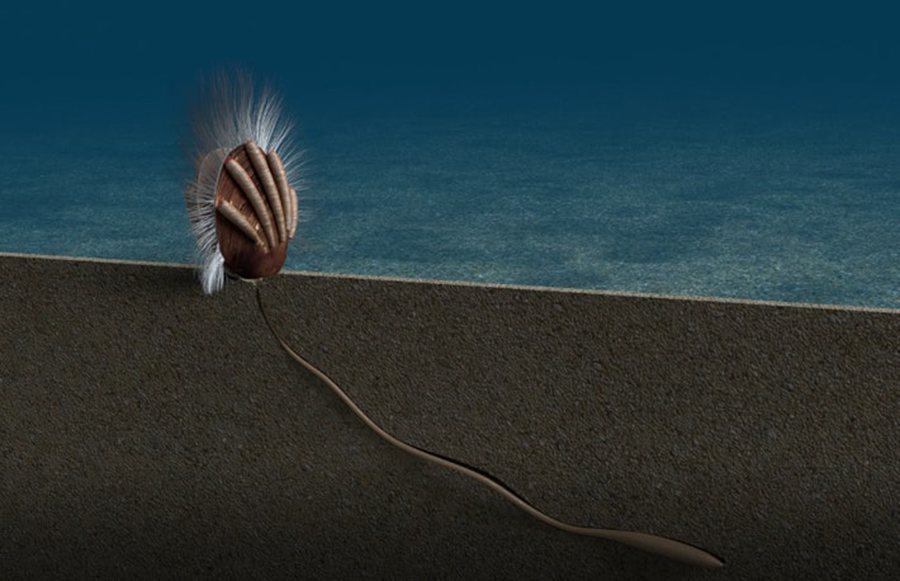Paleontologists Uncover Fossils of Earth's Earliest Parasites

More than 500 million years ago, parasites were already stealing from their hosts.
The relationship between parasite and host is as old as many of the world's earliest animals. In a new study, researchers present the first-ever evidence of a parasitic relationship, dating back 512 million years.
Fossils show that tubelike worms attached to the outside of brachiopods — marine animals that look similar to modern mollusks — and effectively stole their food.
This early instance of parasitism was happening relatively shortly after the Cambrian explosion, some 540 million years ago when Earth's first animals diversified from one another. That means parasite-host relationships are as old as many lineages of animals.
Today, parasitic relationships continue to be common in nature — think of fleas on a dog or head lice. But it can be difficult to identify parasites in fossils since researchers need to infer that a relationship was parasitic from appearance alone.
However, when researchers found a cluster of Neobolus wulongqingensis — an ancient brachiopod — in Yunnan, China, that's exactly what they discovered. This finding was published in the journal Nature.

Grooves in the brachiopod's shell show that the PARASITES LIVED ON THEIR EXTERIOR, but didn't bore into the brachiopod.
Meanwhile, the tubes weren't found on other nearby hosts, like trilobites. This suggests there was a special relationship at play, report the study authors.
These fossils demonstrate a type of parasitism called kleptoparasitism. It's just what it sounds like: The parasite essentially steals food from its host, thereby weakening the host.
In this case, the tube-dwelling parasites seem to have attached themselves vertically to the outside of the brachiopod, positioning their mouths at the same level as the brachiopod's opening where it would take in food. That way, they could divert some of that food to their own mouths.
Several of the tubelike worms would become encrusted on a single brachiopod to feed, the fossils show. Meanwhile, the brachiopod attached itself to the ocean floor thanks to a fleshy ligament, or pedicle.
The researchers also found evidence that tube-encrusted brachiopods didn't grow as large as those without tubes on them, helping to rule out the possibility that the relationship was either mutually beneficial or neutral for the host.
Rather, a parasitic effect "is the most strongly supported probable cause," the researchers write.
ANIMAL THIEVES - Kleptoparasites are common in nature, and the organisms that steal food don't always live on their host. In fact, you've probably encountered this phenomenon at the beach, if you've ever been bombarded by a block of hungry seagulls.
Among birds, kleptoparasitism is one of the ways the animals can adapt their behavior to make them better suited to living in urban environments, researchers reported in March 2020.
But other animals, like hyenas, water snakes, and cuckoo bees have each been known to steal food from others, too, when given the opportunity.
In the same way that a hyena might steal a carcass from a lion today, more than 500 million years ago, tubes were siphoning off food from brachiopods. The latest ancient evidence supports the idea that parasitism has deep roots in nature, not just humans.
Source: www.inverse.com/








